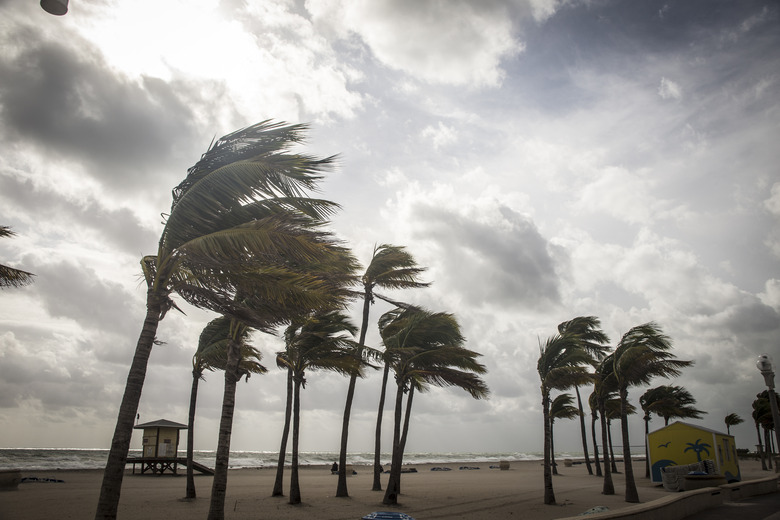Why Is The Eye Of A Hurricane Calm?
Hurricanes are powerful weather systems that can span areas as large as 340 miles in width. Their outer layers contain strong winds and thunderstorms that can wreak havoc on a coastline or a city. And while these outer portions may be tumultuous, the calm eye of the storm plays a part in maintaining a storm's force.
Hurricanes
Hurricanes
Hurricanes take shape over ocean waters in tropical settings where conditions are warm and humid, according to the University Corporation for Atmospheric Research. When they travel outside of these conditions or reach land, the force of the storm begins to die down. Storms that appear in the Atlantic are called hurricanes, while those that form in other parts of the world are known as tropical cyclones or typhoons. The calm, quiet eye of the storm plays a part in how these systems take shape.
The Eye
The Eye
The eye of a hurricane develops as wind speeds increase to 80 miles per hour or more. The eye can be anywhere from 20 to 40 miles in width as storm conditions persist, according to the University Corporation for Atmospheric Research. It forms a round, cylindrical shape that extends up and above the actual storm like a tube. The position of the eye above the hurricane allows air from the atmosphere to sink down inside of it. The calm characteristics of the eye are necessary for heat, moisture and air exchanges to take place.
The Eyewall
The Eyewall
The eyewall is made up of thunderstorm clouds that encircle the eye of a hurricane. In effect, the eye acts as a vortex that feeds humid air and cloud formations into the force of the storm, according to the University Corporation for Atmospheric Research. These processes happen along the eyewall that surrounds the eye. Swirling pockets containing warm humid air enter the eyewall, where the strongest thunderstorms reside. As long as the eye continues to feed the eyewall, storm conditions will persist, according to NASA.
Air Exchange
Air Exchange
The suction action produced by the eye gives form and structure to a hurricane. This process creates calm conditions inside the eye and stormy conditions along the eyewall, according to NASA. In addition to transferring warm air pockets from the upper atmosphere to the eyewall, return air pockets make their way from the eyewall back into the eye. These return pockets absorb additional moisture from the ocean surface and, in effect, return to the eyewall to further raise the storm's temperature.
Hot Towers
Hot Towers
Hot towers form towards the upper-most parts of a hurricane formation. These towers consist of thick clouds that reach from the top of the storm to the lower layers of the atmosphere, according to NASA. Hot towers provide another channel for air exchange in the form of updrafts that further agitate the energies inside the eye of a hurricane. Hot towers work by pulling water vapor up from the eye into tropical airs, which creates additional heat and moisture. The resulting air flows rely on the non-turbulent conditions present within the eye of a hurricane.
Cite This Article
MLA
Jeanty, Jacquelyn. "Why Is The Eye Of A Hurricane Calm?" sciencing.com, https://www.sciencing.com/eye-hurricane-calm-6365963/. 13 March 2018.
APA
Jeanty, Jacquelyn. (2018, March 13). Why Is The Eye Of A Hurricane Calm?. sciencing.com. Retrieved from https://www.sciencing.com/eye-hurricane-calm-6365963/
Chicago
Jeanty, Jacquelyn. Why Is The Eye Of A Hurricane Calm? last modified March 24, 2022. https://www.sciencing.com/eye-hurricane-calm-6365963/
